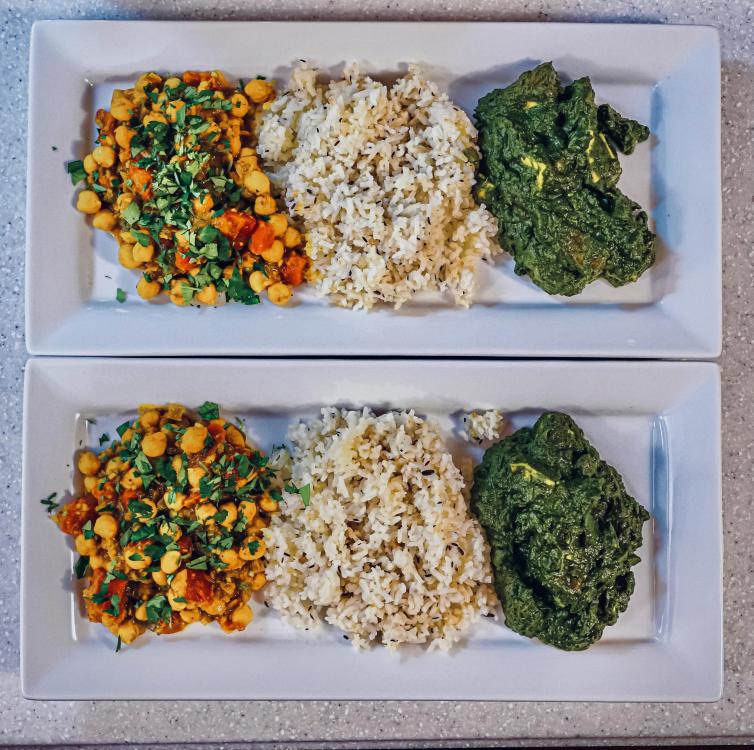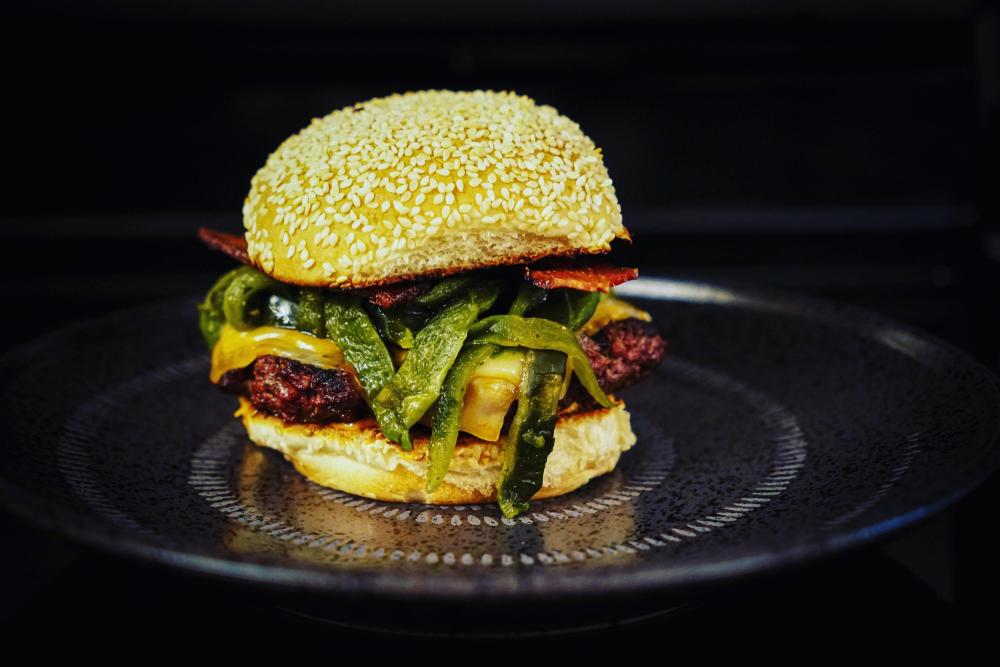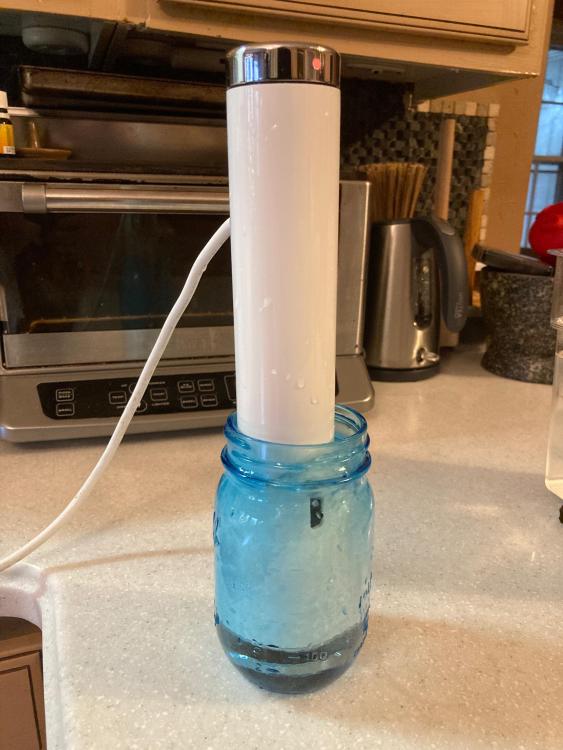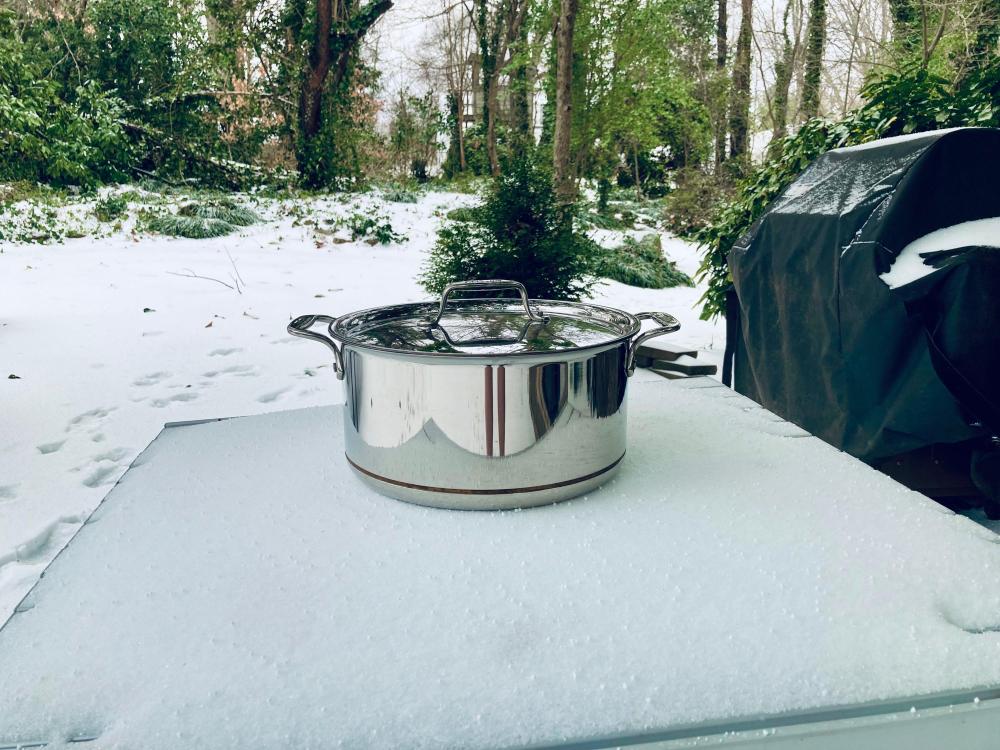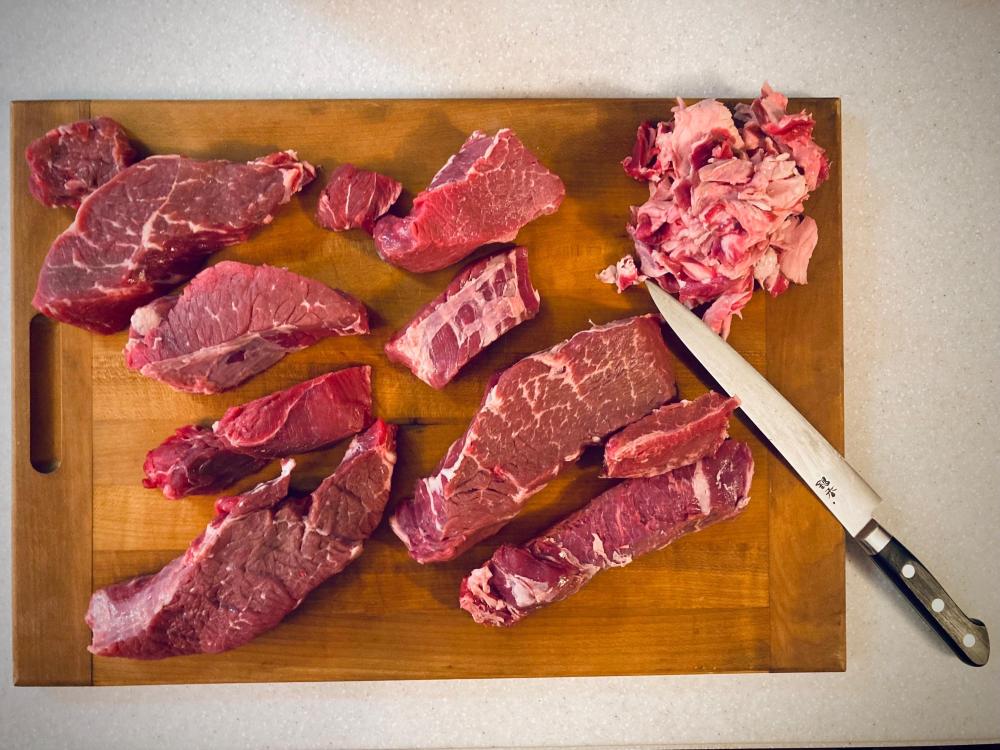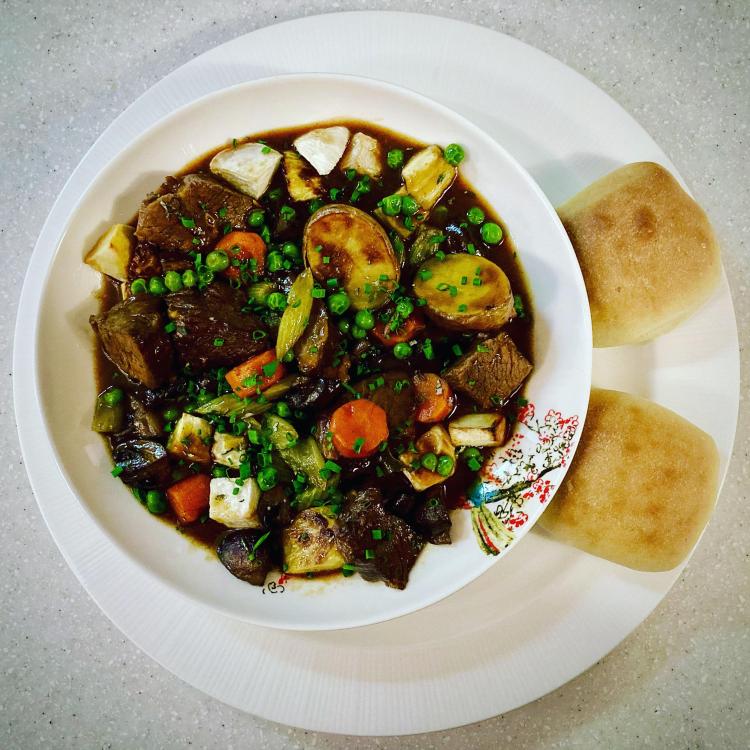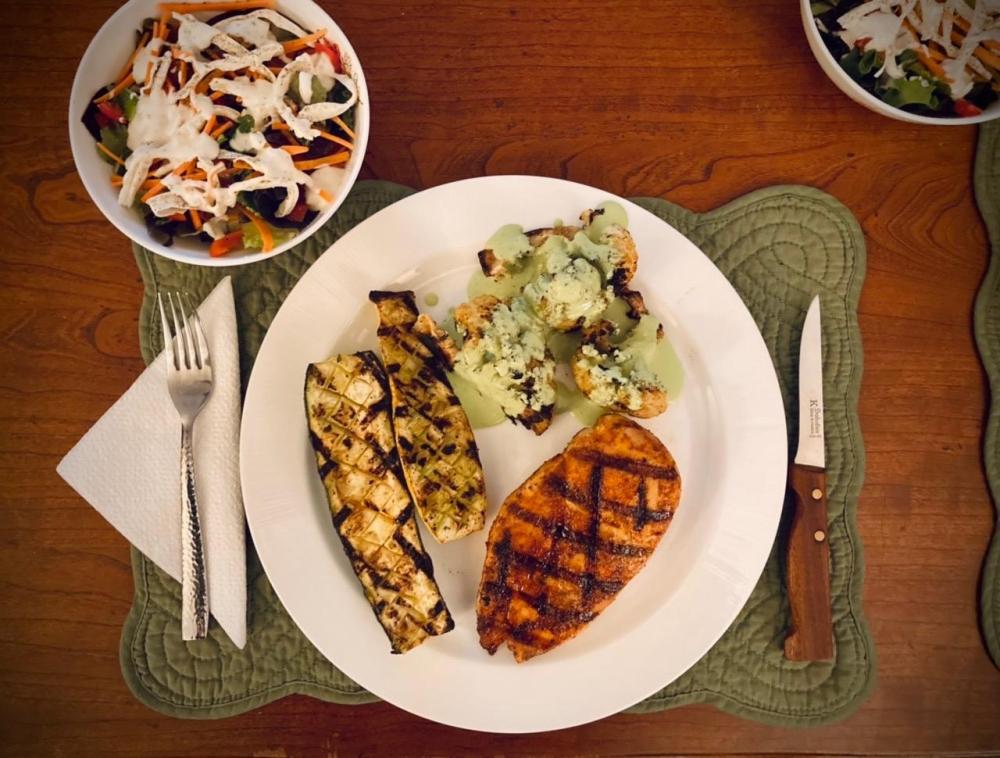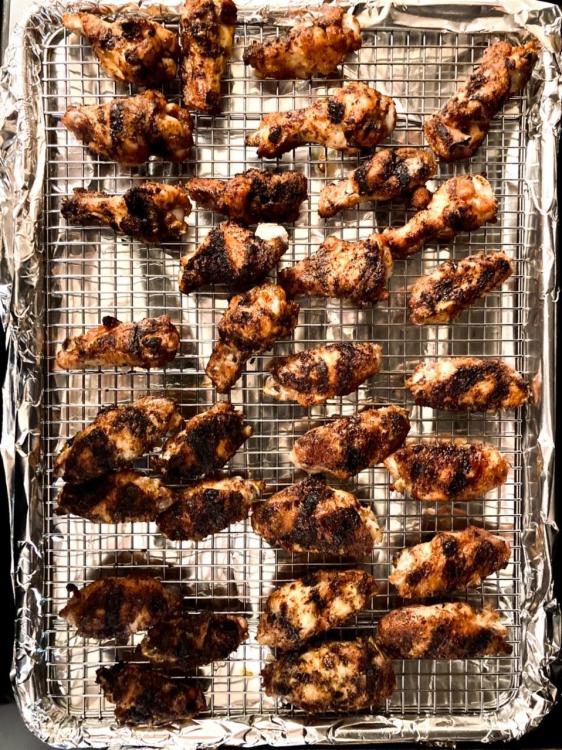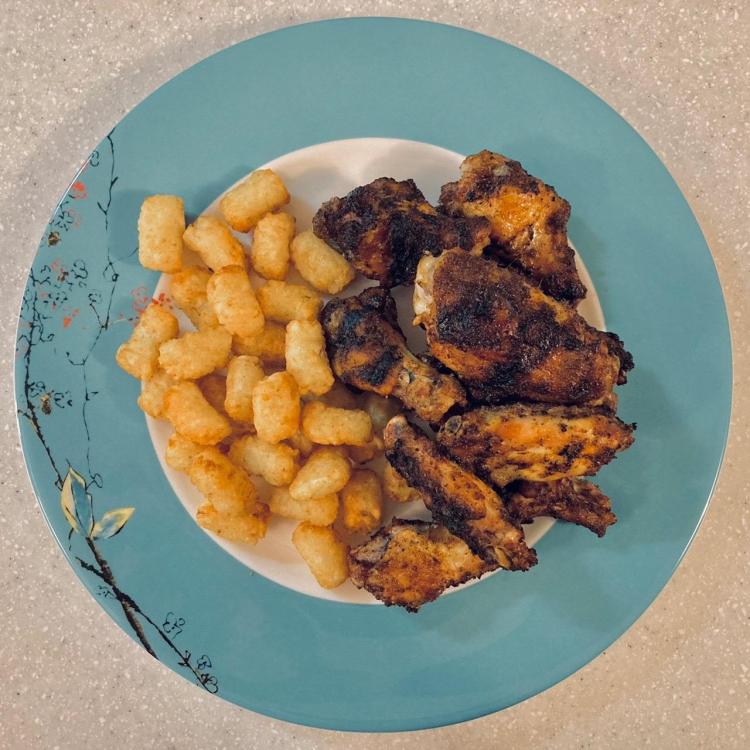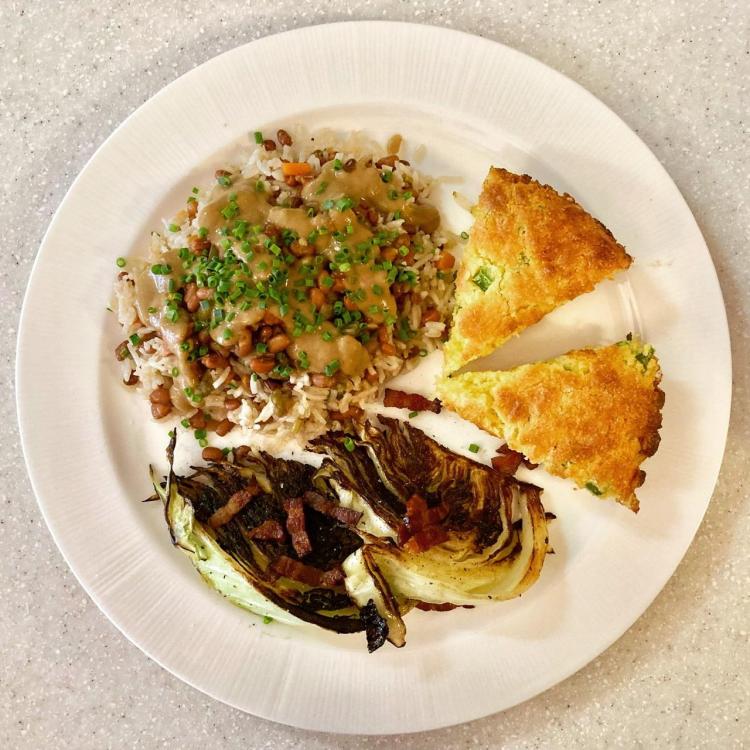-
Posts
1,807 -
Joined
-
Last visited
Content Type
Profiles
Forums
Store
Help Articles
Everything posted by btbyrd
-

Combustion Inc Wireless thermometer probe by Chris Young
btbyrd replied to a topic in Kitchen Consumer
I didn't realize you could save up to an additional $50 off through referrals. I would have had some friends sign up for sure, especially now that I know the price point. Oh well... -

Combustion Inc Wireless thermometer probe by Chris Young
btbyrd replied to a topic in Kitchen Consumer
I don't know if referrals are still going, as an e-mail from Combustion last Monday said that we had until Friday (the 28th) to refer people and have them confirm their e-mail address. But hey... it's worth a shot. -

Combustion Inc Wireless thermometer probe by Chris Young
btbyrd replied to a topic in Kitchen Consumer
Anyone want a referral? -
-

Combustion Inc Wireless thermometer probe by Chris Young
btbyrd replied to a topic in Kitchen Consumer
Thanks! That had somehow ended up in my spam folder. So it looks like the probe itself is $129 and the timer is $79 if you buy them individually, but the preorder will be for the bundle. $80 seems a lot for a timer, but I guess it has to do some computation to figure out the estimated "ready in" time. But $80 seems a lot for a timer. That price for the probe seems reasonable, especially if you could get 30% off of it. Meh. If the whole shebang was $129 and you could get a discount on that, I'd be all over it. But I think I'll have to sit this one out. Which is a shame because I wanted one and I doubt they'll be this cheap again. -
Money aside, that's kind of a tough call. The main draw of the Joule is the form factor. It's just so dang small. I can store it anyhere. I can take it anywhere. I can cook inside basically any vessel. I do wish that it had some sort of rudimentary physical controls. I've been cooking sous vide for so long that I almost never use the visual doneness features of the app, but a lot of that is thanks to all the hard work ChefSteps did in their early years educating people about SV. Having something similar built into the Hydropro seems nice, but... I really only need a temperature display and some up and down buttons. Everything else is superfluous. I look at the Hydropro and just wonder where I'd store it. It's not even that big, but Joule is that small. Still, of all of the more expensive SV units, the Hydropro Plus is definitely the one I'd want, especially if using it in a professional kitchen. I have always wanted to have something with a probe to do some delta cooking. And the form factor is among the best of the larger circulators. The detachable clamp is nice. The repositionable jet is nice. The probe is nice. The metal construction is nice. The display, bigish though it is, is nice. I like the looks of that unit a lot. I'd swap out my Polyscience Chef for the Hydropro Plus in a heartbeat. But if the choice was between a Hydropro Plus and three Joules, I don't see how I could justify it. And that's the real world tradeoff in dollars and cents.
-

Combustion Inc Wireless thermometer probe by Chris Young
btbyrd replied to a topic in Kitchen Consumer
Even at $140 with the 30% discount, that may be a bit too rich for my blood. The main competition is probably the Meater, and the OG Meater probe and charger is $70. I know that this probe has 8 sensors as opposed to the Meater's 2, and the Combustion Inc. one comes with its own display (which doesn't seem especially expensive to build). And it's yellow. And I don't doubt that it will probably be a better product given who is behind the project. But that's still a lot of $$ for a single wireless probe. @adey73 Where did you get the $199 figure from? -
Spicy southwestern poblano burger with Neuske’s bacon, Colby-Jack, and guajillo chipotle Duke’s aioli.
-

Combustion Inc Wireless thermometer probe by Chris Young
btbyrd replied to a topic in Kitchen Consumer
I have a donabe smoker that I like to use as a finishing step on sous vide pork (and occasionally beef short ribs). There are other delicate items I'd like to use in there as well. The problem is that once the the lid closes, you can't really open it to temp check things without letting the smoke out. Wired probes don't work either. I just have to guess, and there's a *lot* of trial and error - mostly error - in getting the times and temps right with the donabe smoker. A similar sort of scenario is cooking sous vide with a temperature delta. It's easy to seal a wireless probe in a bag with a piece of protein and monitor the core temp to make sure that it doesn't overshoot the desired final temp. Vac bags, like a donabe smoker, are kind of black boxes where you can't look inside without significant hassle. Sure, you can futz with hypodermic type K thermocouples and closed cell foam tape... but a wireless probe is much easier. And if it can accurately predict cookt times, all the better. Apart from these scenarios, I do a fair amount of conventional cooking in grills and ovens, and being able to monitor the temperature of something that's cooking outside while I'm finishing up other items in the kitchen seems very valuable. Or being able to keep an eye on the roast in the oven while hosting my family in the living room during the holidays. Or whatever. Right now I mostly rely on a Thermapen for temperature duties. I have a cheap wired probe for large roasts in the oven. They're both just fine, but I think this would be a nice upgrade -- at least if the price is right. I have an IR thermometer too, but they're useless for checking internal temps and they can be somewhat misleading depending on the thermal emissivity of the target. I find they're mostly useful for checking the temperature of cookware. Nice to have, but I'd much rather have a probe. -
They also sometimes sell wine fining agents like chitosan and kieselsol, but those are mostly used with a centrifuge. If you’re looking for a good source of modernist ingredients at good prices in home cook quantities, Modernist Pantry is the place to go.
-

Combustion Inc Wireless thermometer probe by Chris Young
btbyrd replied to a topic in Kitchen Consumer
Which probes are those @JoNorvelleWalker? -

Combustion Inc Wireless thermometer probe by Chris Young
btbyrd replied to a topic in Kitchen Consumer
I don't see it that way at all. Wireless probes are potentially useful to anyone who cares about temperature. It's not about replicating sous vide or a combi oven.... it's being able to check temps at a glance without having to physically go to your grill or oven or whatever. Being able to check the temp of a pork shoulder (or whatever) outside while cooking inside is obviously valuable. There are numerous other scenarios where a wireless probe is useful. Having multiple sensors embedded in the probe makes it very likely that predictive cooking will be accurate. A probe that can measure core temp, ambient temp, and four points in between is... well, I don't even know what it is. But it seems potentially very helpful. And though few people will ever use it with liquid nitrogen or to deep fry, the fact that the unit can withstand such extreme temperature environments is a testament to its build quality. I mean... I do have access to LN at home and I occasionally deep fry, and I doubt that I'd use the probe for either purpose. But I do have a bunch of use cases in mind where a probe like this would be quite useful. I didn't feel too attracted to the Meater probe or other similar probes because they were girthier and didn't have much advantage over and above ordinary probes. This seems much better. I just hope the price is right. -
Looking back at the thread, I see the issue of containers came up. If I'm cooking for extended periods or am cooking something large-ish, I use a 12QT Rubbermaid container with this hinged lid from a company called Everie (eG-friendly Amazon.com link). That company apparently makes a whole range of lids and containers that work with Joule, so check them out. They even sell insulated wraps for the container if that's something you care about. This setup is large enough to cook pretty much all the things I normally cook. If I need to cook something longer, like a rack of ribs, I use my OG Cambro that I used to use with my Polyscience circulator. I find the official silicone Joule lid to be close to useless. It's too small to use on my 6 and 8 qt dutch ovens and the pots it does work on are too narrow to cook anything significant in. Maybe it'd work with the pot on my pressure cooker... I won't be finding out anytime soon. Actually the one thing that I use it for is helping to seal up the lid on my big Cambro that has a Polyscience-sized slot. It's not a great seal, but it works well enough when I'm too lazy to bust out the plastic wrap.
-
I just had a couple eggs crack while in the bath, so I had to do a deep clean on Joule. That involves running it at 140F with a 50/50 mix of vinegar and water. One of my favorite things about Joule is that I can do this in a mason jar. That's pretty cool.
-

Combustion Inc Wireless thermometer probe by Chris Young
btbyrd replied to a topic in Kitchen Consumer
The real thread is here. I don't know why someone felt compelled to make that second thread. Anyway, it's not a Kickstarter without a Kickstarter. I don't even know what that would mean. Anyway, I'm hoping to buy one if the price is right. I have a few applications (like cooking inside a donabe) where using traditional probes doesn't work well. Other wireless probes are much larger than this one (though it's not small) and don't offer nearly as many features as this one does. And I trust Chris Young to make an awesome product. Host's note: three related topics have been merged, and the host (that would be me) forgot to leave a link so indicating. As a result, the first two sentences in this post won't make sense! Sorry! -
I think the handles are fine. I have three skillets, three saucepans, an 8 qt "stock pot" and an actual stock pot and I don't have any issues with any of them (except maybe that the big stock pot isn't induction compatible for some reason). It's mostly D3 with one piece of Copper Core and one D7. I'd like to add a copper core saute pan at some point. If you shop around, there are deals to be had. Whether or not the Mauviel is worth the additional charge is debatable. What kind of heat source are you using? I think the benefits of a lot of high end cookware are lost when used with crappy ranges, low-end induction burners, and the like.
-
It's actually quite similar to the samosa dipping sauce from Jean-Georges's Spice House that I make not infrequently. The idea of just blending herbs into yogurt instantly upped my sauce game when I learned about it. The real Duvel inspiration was adding the uzu kosho. I've made uk mayo before, but never tried using it with one of these blended sauces... it's a tasty move.
-
Grilled “bbq” chicken with grilled coriander cauliflower and ranch zucchini/squash. And a salad. The sauce for the cauliflower was kind of a riff on @Duvel’s recent wing sauce… no yogurt in the house, but I blended sour cream with Duke’s mayo, cilantro, jalapeños, lime, coriander seed, and some yuzu kosho. The yuzu kosho is a nice touch in this kind of sauce.
-
Buttermilk and yogurt work. Kefir apparently works too, but not as well. Buttermilk and whey increase tenderness and reduce chewiness in marinated pheasant. Straight up lactic acid also tenderizes, and I'm betting that does much of the work in buttermilk and yogurt marinades. For fun, you can skip to 13 minutes into the following clip to watch Heston Blumenthal convince someone to give yogurt marinated chicken a MRI. Spoiler: Yogurt appears to dramatically enhance marinade penetration. Why? Who knows!
-
I'd never seen that brand of chicken before a few days ago. I'd also never seen carrageenan in raw chicken before. $3.99/lb is too much, especially when 15% of it is dreck.
-
That’s right. The rack/pan is just my default platter for taking stuff off the grill so it doesn’t steam out and get soggy. Plus I can throw the wings in the oven if they start to cool off too much. I’ve been meaning to try just cooking them in the oven, but the grill is basically just as easy. I may give it a shot sometime soon (probably with a baking powder or soda pretreat) and see if I can get a crispier result without frying.
-
As much as I love fried wings, my go-to method is to grill them. While they may not have the glassy, crispy crunch of a properly fried wing, the meaty and smoky grilled flavor is second to none. I hit the wings with salt and MSG and let them sit for a while before dusting them with a dry rub containing (in tonight's case) a blend of dried chilis, garlic powder, onion powder, and coriander. The chilis were a mix of ancho, chipotle, sweet paprika, Hatch, guajillo, and cayenne. Why so many? Why not. Anyway, I grill them on low on my Weber gas grill, putting the drums on before the flats and removing the flats before the drums. We usually pair them with convection-baked tots. The store was out of normal tots, so I had to settle for minis. We also usually serve them with celery, carrots, and strips of bell pepper. But tonight we served them with a huge salad (not pictured) as well as blue cheese and ranch dressings. And some Frank's wing sauce for dippin'.
-
- 869 replies
-
- 12
-

-



